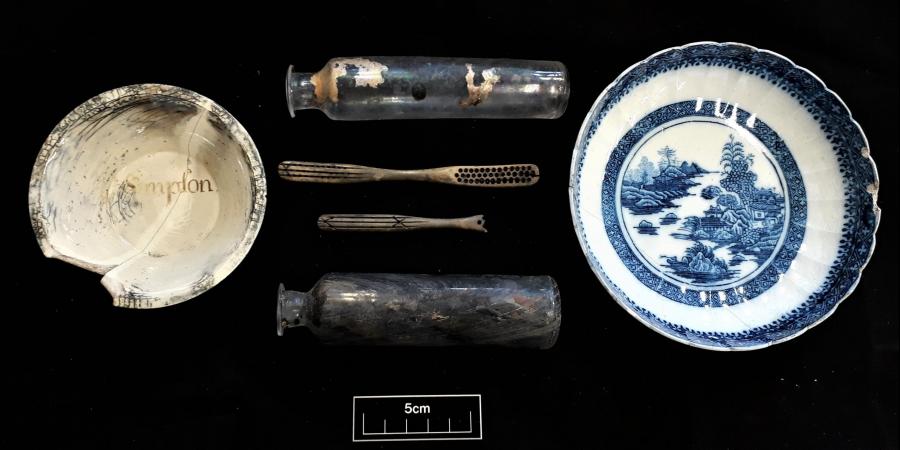Artefacts from the Bath Abbey Footprint Project
As part of the £19.3 million Heritage Lottery Fund supported Footprint Project the vaults immediately to the south of Bath Abbey are being renovated to create new spaces for the Abbey and the community. The vaults, constructed in the mid-18th century, occupy a space which historically would have been close to the centre of the Roman town of Aquae Sulis, and within a cemetery associated with the Saxon minster and the cloisters of the Norman cathedral.

North East View of the Abbey Church by James Gandon (engraver) after Thomas Malton the Younger (1748−1804) by kind permission of Victoria Art Gallery, Bath & North East Somerset Council
The first phase of the archaeological works entailed recording and excavating post-medieval archaeological features down to the formation level of the new floors. During these works, we recovered a large assemblage of late 18th- and early 19th-century finds from the sump of a mid-18th-century water closet. The water closet was situated in the cellar of No. 2 Kingston Buildings, which was built against the south side of the Abbey in c.1755–62. This house was demolished in 1834, at which point, the water closet and associated drainage system became defunct.The artefacts which were recovered from the sump comprised a mixture of food waste (animal bones and oyster shells), broken crockery and ceramics, glassware, and various small objects that had been lost down the drain.
The ceramic assemblage includes one complete and one partial example of a creamware bowl with the name ‘Simpson’ painted over the glaze. These bowls were probably manufactured in the 1760s for Mr Simpson, proprietor of a nearby establishment known as ‘Simpson’s Rooms’ which operated between the 1745 and 1770.
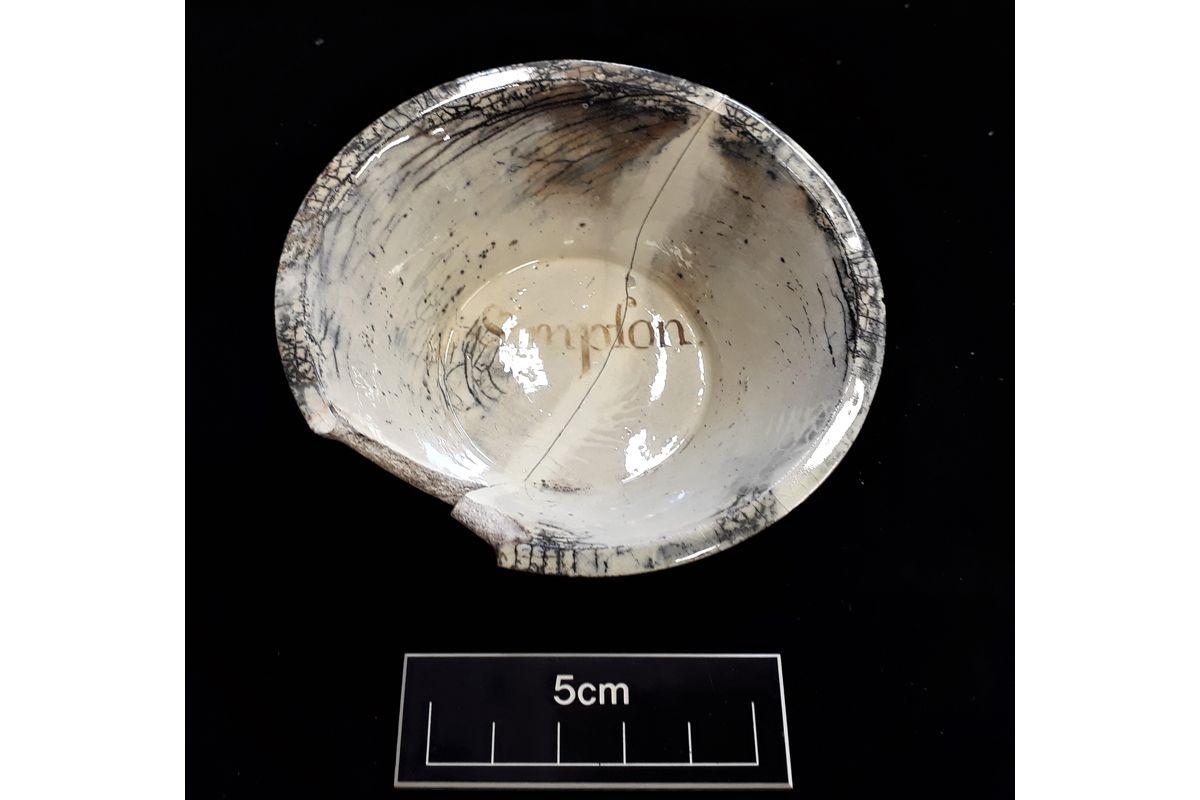
Creamware bowl
Simpson’s Rooms, formerly known as Harrison’s Rooms, and better known as the Lower Assembly Rooms, were built in 1708 but were destroyed by fire in 1820. The Rooms were used for promenading during the day and as a venue for dancing, card games and gambling in the evenings. The proprietors also provided food and refreshments to the guests (hence the bar ware pottery).
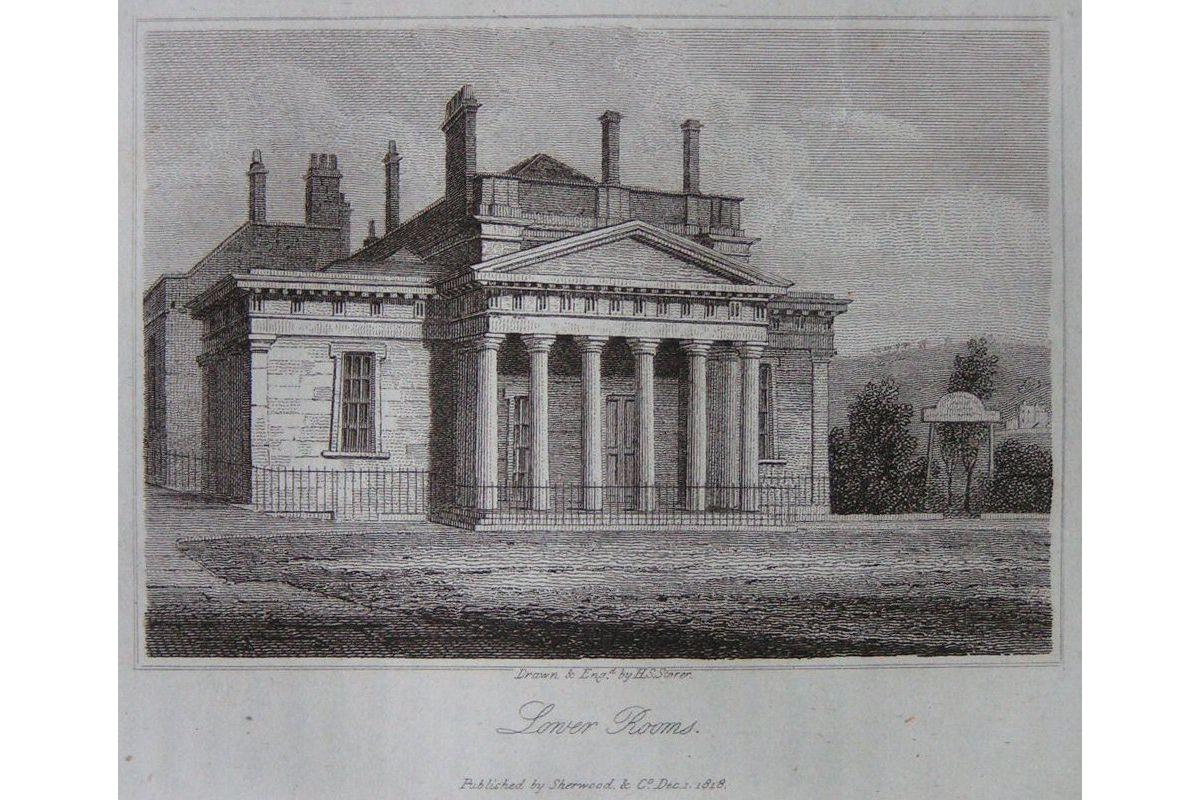
Lower Rooms Published by Sherwood & Co. Dec 1, 1818
The Rooms feature in Jane Austen’s 1803 novel Northanger Abbey, where Catherine Moorland is first introduced to a Henry Tilney, and are also described in Christopher Anstey’s 1799 New Bath Guide, or, Useful Pocket Companion:
‘No place in England, in a full season, affords so brilliant a circle of polite company as Bath. The young, the old, the grave, the gay, the infirm, and the healthy, all resort to this place of amusement. Ceremony beyond the essential rules of politeness is totally exploded; everyone mixes in the Rooms upon an equality; and the entertainments are so widely regulated, that although there is never a cessation of them, neither is there a lassitude from bad hours, or from an excess of dissipation. The constant rambling about of the younger part of the company is very enlivening and cheerful. In the morning the rendezvous is at the Pump-Room; -from that time ’till noon in walking on the Parades, or in the different quarters of the town, visiting the shops, etc; -thence to the Pump-Room again, and after a fresh strole, to dinner; and from dinner to the Theatre (which is celebrated for an excellent company of comedians) or the Rooms, where dancing, or the card-table, concludes the evening.’
It is possible that the crockery was sold off when Simpson’s Rooms changed hands (and name) in 1770, but it is also possible, given the proximity of the establishment to the site, that the crockery was ‘borrowed’ and never returned.
The blue and white bowl dates from the late 18th or early 19th-century. The design is copied from Chinese export porcelain that potters in Nanking were making specifically for the European market. British manufacturers produced a number of similar-looking designs around the same time, the most common being ‘Willow Pattern’ – perhaps the most widely-used ceramic pattern of all time.
Other interesting artefacts include bone toothbrush handles, which would originally have had coarse animal hair bristles. The two of the examples from Bath Abbey are somewhat unusual in that they have brushing heads at both ends. Interestingly, we uncovered two similar double-ended toothbrushes during our recent excavations at Bath Quays in 2017. The rather prosaic explanation for having bristles at both ends appears to be that one end was intended for brushing the exterior of the teeth and one end for brushing the interior side. Our colleague Rachel Cubitt, of Museum of London Archaeology, has informed us that similar recently-excavated examples from London date from the late 18th century.
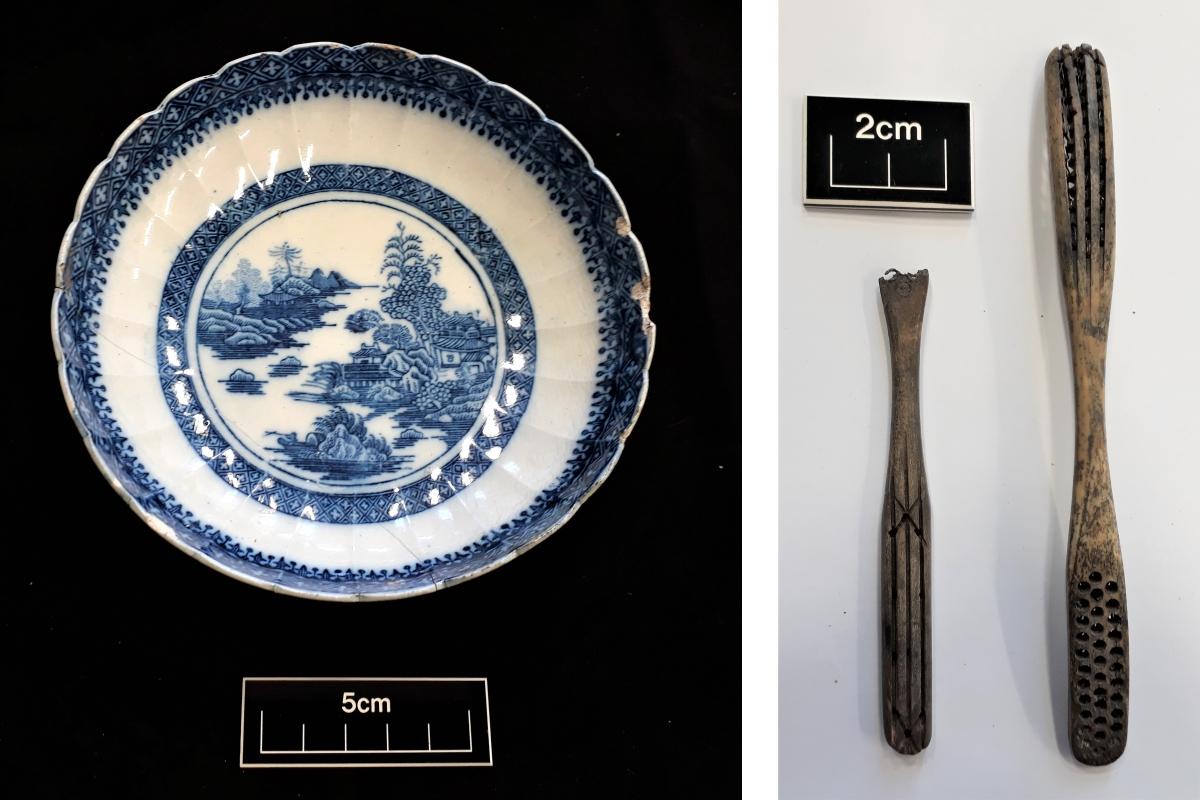
Nanking blue and white patterned bowl, and double-headed bone handled toothbrushes
The purported healing qualities of the hot springs attracted many visitors in search of a cure for their ailments, and consequently the city was able to support a large number of doctors and apothecaries. This is reflected in finds assemblages from Bath, which frequently contain more drug jars and glass phials than other cities. The glass phials that we recovered from the water closet sump date from the late 18th or early 19th century and probably originally contained medicines.
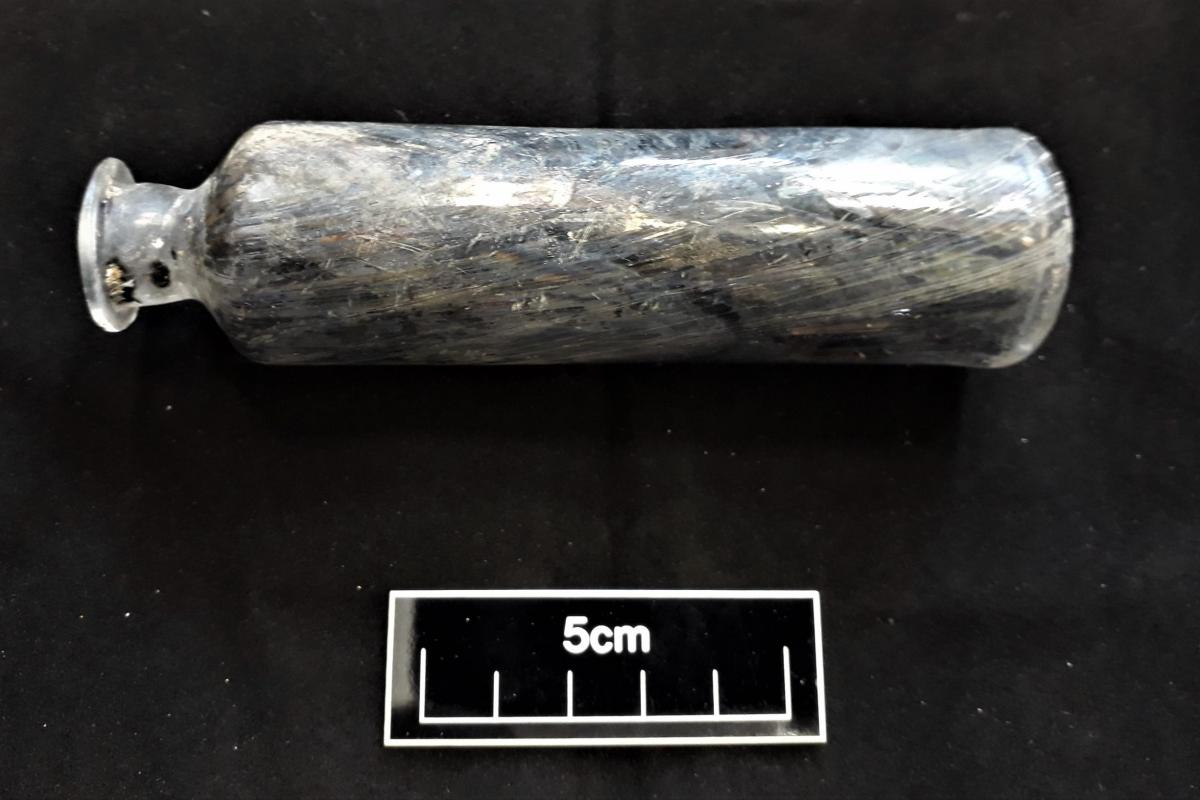

Glass medicinal phials
The finds are currently being conserved at Wessex Archaeology West’s offices and will be fully assessed and included in the final report. We hope to have some of the artefacts on show for the forthcoming ‘behind the scenes tours’ that Bath Abbey are planning as part of their fundraising for the project. Follow them on twitter @bathabbey to find out when these will be taking place!
